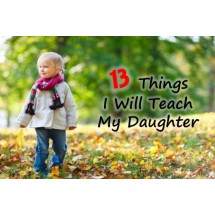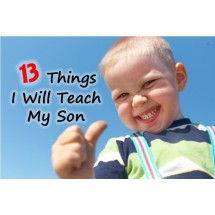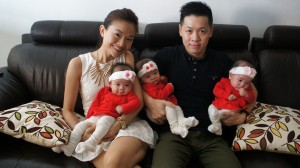
The year 2013 began with some unexpectedness news for Shinn, then 30, and her husband Kelvin, 31. The couple, who had been married for just over a year at the time, were pleasantly surprised to discover that they were expecting! Their original plans had been to begin trying for a baby the following year, so this was definitely much earlier than expected.
But that was just the beginning of a life-changing discovery for them. The couple had talked about their desire to become parents prior to this, and planned to have just one child. However, during their 12-week visit to the obstetrician, Shinn and Kelvin learnt that they were not expecting just one, not just two, but THREE little ones!
During a detailed ultrasound test, the OB calmly told Shinn that this looked like a twin pregnancy. Less than a minute later, she announced “Wait, I think it’s triplets! See, this is another one!”
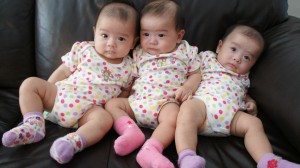
Shinn was, naturally, less calm about the news. At that time, she couldn’t believe her ears. Meanwhile, her husband was staring at her in utter disbelief. Both of them felt like the rug had been pulled out from beneath their feet, completely floored by the news. Would they be able to handle three kids? Well, it certainly looked like they were going to have to learn.
Their extended family on both sides were very supportive when they heard the news. Shinn credits her mum for being especially encouraging throughout the pregnancy. The couple’s friends were also surprised, as there was no history of multiples on either side of the family.
Even the obstetrician shared that the chances of a spontaneous (ie non-assisted) triplet pregnancy is extremely rare. There are several ways for women to conceive triplets. In Shinn’s case, her body had released two eggs at one time, and each had been fertilized separately, before one of the eggs split into two. The result was mixed triplets – one fraternal and two identical.
Indeed, it was nothing short of a miracle!
Yet the couple had many misgivings about raising three children, or even the chances of carrying them to full-term. They read up extensively on multiple pregnancy issues, and discovered all manner of stories, both positive and negative. During this process, they came across the method of “selective reduction”.
The selective reduction procedure is recommended for women who find themselves pregnant with higher order multiples, and involves the doctor inserting a needle into a fetus’ heart to inject air into the umbilical vein. In short, ending its life. An ultrasound is then performed to make sure that that particular fetus’ heart has stopped beating. This procedure is done early in the pregnancy, to allow the woman to carry her remaining child/children to full-term with a less risk of complications and better health for the baby/babies.
To many parents or couples who are trying to conceive, this might seem a very cruel procedure to undergo, because it involves taking away a life. But because Shinn and Kelvin felt extremely unprepared to have three children, it was an option they seriously considered at the time.
After much thought, the couple decided not to undergo that procedure, and to carry on with the pregnancy as-is even though they still felt very unsure of what lay ahead.
“Actually, it was my mum who managed to talk me out of the decision, by promising to help us as much as she could. There was also the added risk that the procedure would affect the other two babies negatively, and we were afraid that we might end up losing all three.”
Thankfully, Shinn’s pregnancy was relatively smooth for the first few months, apart from some facial outbreaks and nausea in the first trimester – typical pregnancy symptoms. However, towards the end of her second trimester, her obstetrician informed the couple that one of the triplets was having a lower blood flow.
This could potentially affect the fetus brain and lung development seriously, and if one of the babies was not able to pull through, this would indirectly affects the growth of the other two as well. If that happened, they would have to deliver all three of them prematurely. At that stage, the babies were too small to be delivered safely, with low rates of survival, so Shinn was given hospitalization leave to rest at home.
In the weeks that followed, there were more and more frequent check-ups and detailed scans to follow up with the babies’ development, blood flow and weight. Finally it was week 34, and time for the scheduled caesarean section.
Initially, the OB had given permission for Kelvin to be in the operating theatre. However, on the day itself, they were informed that due to too many staff being needed in the room, Kelvin could not come inside, so Shinn was wheeled in alone.
Shinn remembers, “I was really nervous the whole time, and shivering extensively during the whole process. After the epidural injection, I could only feel numbness throughout the lower part of my body. Not long after, I heard the sound of one of my babies crying. Within a few seconds, all three of them were delivered!”
Babies Laryssa, Larae and Laryn were delivered on the 2nd Oct 2013. Both Laryssa and Laryn weighed around 1.6kg, while Larae weighed 1.8kg.
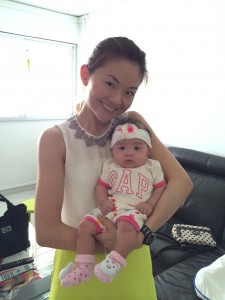
Larae was brought to Shinn’s waiting arms for a very brief moment, before being warded in the Special Care Nursery. She was not able to hold Laryn and Laryssa, who were rushed to the NICU.
Shinn shares, “I had always had this feeling that all my babies would be able to make it to the world safely. I don’t really know how to describe that faith. I think it might be due to the fact that they were spontaneous triplets, and not something we had planned for, thus I always had this perspective that the Lord had blessed me with them for a reason – a good one.”
Shinn was warded in KKH for 4 days post-delivery. She was not able to take her babies home with her when she left the hospital, as they did not meet the minimum weight (ie. 2kg) for discharge. Of course, she was very disappointed and saddened that she could not bring them with her.
Even though she was doing her confinement, Kelvin and Shinn went to visit the triplets in KKH every day. Finally, after around two weeks, Laryn was the first to come home with them, followed by Larae then Laryssa. Now their family was complete!
Since then, the journey of motherhood has definitely been a steep learning curve for Shinn. Those early months were extremely tough, as the couple cared for their triplets on their own most of the time, with one helper. It was so tiring and rushed to breastfeed all three consecutively, so they decided to switch to formula milk after two months, and were thankful that the babies took well to the bottle. Often, Shinn had to juggle two crying babies at a time, while her helper took care of the third one. Shinn’s mother came over to help out whenever she had time off work.
 After her maternity leave had ended, Shinn made the decision to return to work. Thus far, her in laws and helper have been the main caregivers for the babies during the day. On weekday nights, two of the babies stay at her in-law’s place, while the couple return home with one. On the weekends, the couple bring all three babies home and enjoy precious time as a family.
After her maternity leave had ended, Shinn made the decision to return to work. Thus far, her in laws and helper have been the main caregivers for the babies during the day. On weekday nights, two of the babies stay at her in-law’s place, while the couple return home with one. On the weekends, the couple bring all three babies home and enjoy precious time as a family.
With the twins almost 6 months now, the next hurdle to cross will be introducing them to solid foods. And then when they begin to crawl, and to walk, caring for their three little ones will bring on new challenges and joys. But as Shinn looks back on their experience thus far, she has this to say: “I thank the Lord for this magical journey. And I know that He will carry us through.”


